Category: Engaging with families
Posted by Dr. El - June 14, 2013 - Boomers, Business Strategies, Communication, Customer service, Engaging with families, McKnight's Long-Term Care News
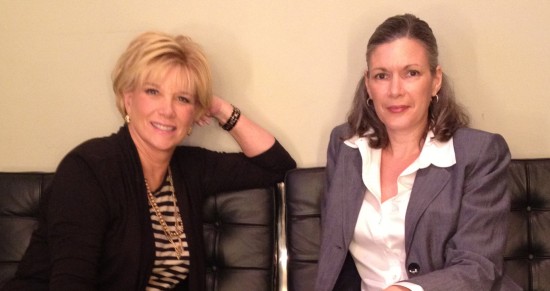
Here’s my latest article at McKnight’s Long-Term Care News:

5 lessons long-term care providers can learn from Joan Lunden
Award-winning journalist and author Joan Lunden and I met recently to talk about eldercare issues. Joan’s mother is 94 years old and happy in a small care home after living for years in the community with home care.
Joan, a physician’s daughter, talks with family caregivers around the country as part of her mission to educate people about the challenges of eldercare.
The observations she shared in our conversation deserve attention from LTC providers looking to meet the needs of residents and their families. As a spokeswoman for family caregivers, her experience echoes that of millions of families across the country.
1. Help people choose the right level of care for their loved one.
The small care home was the third placement for Joan’s mother once she could no longer live in the community.
Lunden: When I finally moved my mother into a facility, I moved her into a place that would have been great for my mother 10 years ago. I moved the mother that was in my head. In reality, the beautiful dining room scared her because she didn’t recognize people, she was alone in her apartment when she started sundowning. The place terrified her. I had chosen the completely wrong facility.
As LTC providers, who recognize the toll it takes on elders and their family members to move from facility to facility, we can do more to help families find a placement that meets the needs of their loved one.
- We can strive to provide the family with a realistic assessment of needs and what a facility can offer.
- We can refer residents to other levels of care within our systems.
- We can build relationships with other facilities so that we refer potential residents to each other.
2. Assist families with the transition to parenting their parent
Joan points out that shifting the roles in the family can be very challenging.
Lunden: When you get to that life transition when you become the parent to your parent, it doesn’t feel natural because you’ve spent a lifetime learning to be a child to them and they have always been in that parental position. To all of a sudden have that role reversed is very disconcerting to a lot of people. It’s a hard one to accept. It often feels uncomfortable to tell your parent what they can do or can’t do.
Some families come to us having negotiated the shift in roles for years, but more often we find adult children and their loved ones struggling to find a way to handle dramatic role changes in the midst of a health crisis.
We can assist families with the role transition when we:
- Offer family education groups.
- Refer to counseling resources in the community.
- Recommend written resources such as David Solie’s book, “How to Say It to Seniors” which focuses on the communication challenges between adult children and their aging parents.
- Use our consulting psychologists to help the team with challenging family issues.
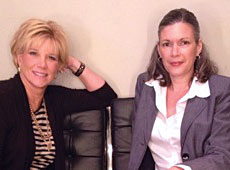
3. Provide an opportunity for staff to take a break
Joan offers a place for caregivers to recharge through her Camp Reveille.
Posted by Dr. El - June 5, 2013 - Anecdotes, Boomers, Communication, Engaging with families, For Fun

Award-winning journalist and author Joan Lunden takes time from her busy schedule to talk with Dr. El of My Better Nursing Home about her experiences caring for her 94-year old mother and speaking with other family caregivers around the country.
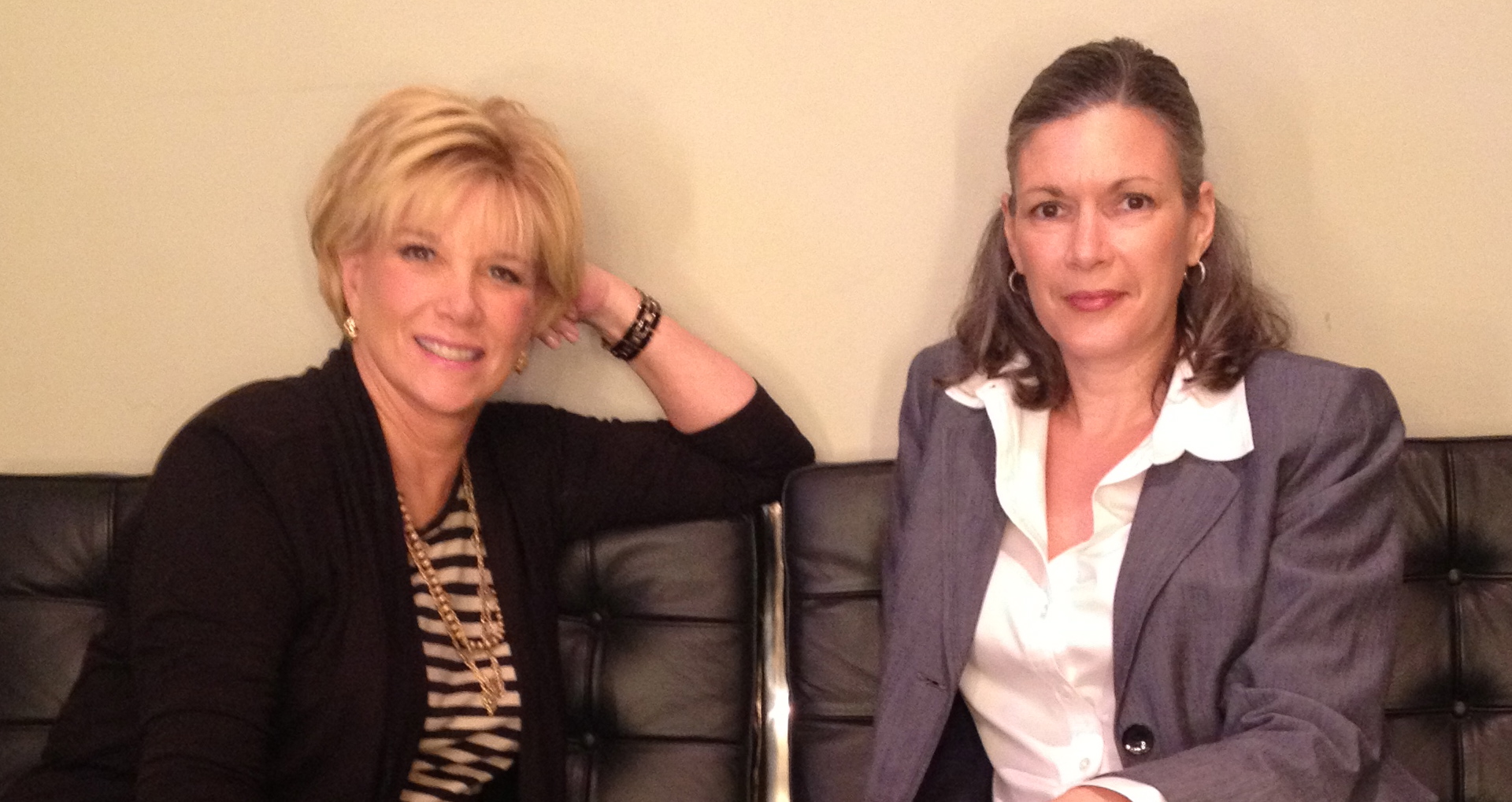
Dr. El: Joan, you’re part of what’s called “The Sandwich Generation,” taking care of your young children and an aging parent while maintaining a high-profile career. How do you manage this?
JL: After working on Good Morning America for twenty years where you never know what part of the world you’re going to be in while raising 3 daughters, I don’t think anything could get any harder than that. But I think having kids the second time around, you have to decide what you’re like and are you physically and psychologically up to the task. I wasn’t even daunted about having a second round of children. But no matter what we do as women, running businesses and keeping hectic schedules, the day you start taking care of a parent, that can really bring you to your knees….When you get to that life transition when you become the parent to your parent, it doesn’t feel natural because you’ve spent a lifetime learning to be a child to them and they have always been in that parental position. All of the sudden to have that role reversed is very disconcerting to a lot of people. It’s a hard one to accept. It often feels uncomfortable to tell your parent what they can do or can’t do.
Dr. El: The caretaking you’re talking about can be quite stressful and I saw on your website you have a place called Camp Reveille. Can you tell me about that?
JL: I got remarried and I married a guy who runs summer camps for children. I’m no dummy, I married a guy with a 50-foot climbing wall and 17 tennis courts! I started spending my summers up in Maine with him and at the end of every summer I would find that I was my least stressed, my absolute most fit, I was one with nature again….One day we were walking by the lake and I said to my husband, “I’m always talking to these women’s groups all over the nation. I should have a summer camp for women.” And my husband said, “The facility is yours. Do it.” And the next summer we ran our first Camp Reveille, which is a 3-night, 4-day stay because women don’t have wives and can only deal with being away for that amount of time. That’s long enough to unhook from electronics, unwind from the hectic pace of life…and connect with the women….The emotional strength that comes from getting a group of 150 women together is really powerful. The sharing of stories, the understanding that you’re going to get to the other side [of what you’re going through], learning from each other, motivating each other in a safe environment. They go back not just refreshed, but I feel a lot of them experience a transformation and are able to let go of a lot of baggage they didn’t even know they were carrying around.
Dr. El: Is the camp mostly for family caregivers or is it also for professional caregivers?
JL: It’s for women in general. About 75% of the women identified themselves [in their pre-camp questionnaires] as caregivers. Several women had just lost their husbands and came to the camp with their hospice workers. I never have seen such a transformation as these two women [a widow and her hospice worker] who came in and when they left on the last day I almost didn’t recognize them because they had let go of so much stress and heartache that they were like two giddy little girls, laughing.
Dr. El: For most families, one of the stresses of eldercare involves the financial challenges, including medication costs. What are your thoughts on how to manage this?
JL: I do a lot of health campaigns and I’m a doctor’s kid who always thought I’d grow up to be a doctor until I worked in a hospital and found out that scalpels were not happening in my career. But truly the dissemination of health information and the ability to help people make better decisions is at my core. I’m working right now with Walgreens who has really made great strides in trying to figure out ways to bring prescription costs down. One of the ways is Medicare Part D. The real area that it seems people can get some savings is that a lot of these programs that you have to sign up in when you sign up for Medicare Part D are now affiliating themselves with pharmaceutical chains. When they do that, you need to review your plan and ask if there is a preferred pharmacy network so you can get the lowest copays.
Dr. El: This is an important issue because sometimes people will skip their medication because they can’t afford it and this leads to a whole host of problems and readmissions to the hospital and nursing home.
JL: That’s what this Walgreens survey found, that one in five people were skipping doses to make a prescription last longer or not getting them refilled. And one in four said that when a doctor wrote a prescription for them, they never got it filled. Nonadherence to medication therapy is estimated to cost the healthcare system 300 billion dollars a year…. I don’t know how we’re going to reform healthcare in this country unless we do it grassroots, person by person, just like we got people to stop smoking. It’s a huge educational process to help seniors and caregivers understand how they can get the most cost savings from these plans that they belong to.

Dr. El: Let’s talk a little bit about your personal situation. Your mother is in a care facility right now. Can you tell me about how you chose that place and what it’s like there?
JL: I had kept my mom and my brother in a condo together and had a person come in to help them. My brother had Type II Diabetes and he had all the complications one could have with it and he was unable to keep a job for several decades, so I paid for them. The condo worked pretty well until my brother died about 6 or 7 years ago and it became abundantly clear to me that there was no way my mother at 88 years old could continue to live in that condo by herself. And that is one of the toughest things, when I talk to people, making that decision that their parents need to move out of their house or apartment and into a care facility. And I think that part of the reason is that we’re living with this myth that the minute you leave your house and move into a nursing home, you die, and that’s absolutely not the way it works, at least from what I’ve seen.
Dr. El: I work in nursing homes and it’s not what I’ve seen either.
JL: When you leave a place, hopefully you make that decision before it’s a crisis, but most people wait until somebody’s had a fall or has an accident in the car or wait for the crisis call. Once you move your loved one into a facility, I’ve found they’re often better off instead of being by themselves in their house. I think if I’d have gotten my mother into senior living far sooner, she would have been much better off today because she would have had conversations with people. She became a recluse at home. When I finally moved my mother into a facility, I moved her into a place that would have been great for my mother ten years ago. I moved the mother that was in my head. In reality, the beautiful dining room scared her because she didn’t recognize people, she was alone in her apartment when she started sundowning….The place terrified her. I had chosen the completely wrong facility.
Dr. El: And how would you know because you’d never done this before.
JL: And not only that, I hadn’t been living with her. I was typical of many families in that I lived far away and when people come into town for a visit, everyone puts on their best face — there’s no problem, we’re doing fine. And you don’t realize that they haven’t opened the mail for the last two years. In retrospect, there were warning signs that my mother needed more help. I came back to Sacramento, California and moved her to the next place, but she kept falling. Her neurologist recommended a small care facility in a house setting with five residents. That was the best advice I ever got. She now lives in a ranch-style house that’s not at all institutional. She gets out of her room every day, they play bingo — she’s the reigning champ, she reads the newspaper to the other residents in their 90s and they do chair exercises. It’s fastidiously clean. It was the best move I ever made.
Dr. El: It’s so amazing when you find the right place because it changes your relationship from the worried, intense caregiving to I’m visiting my mom and we’re having a relationship like we used to have.
JL: Yes. Instead of spending the entire time in town figuring out what’s wrong, now I can go in — and my mom can have good days and bad days, she does have dementia — but I made up these books with photographs and she can sit and reconnect. The man who runs the place gave me the advice that the more you can engage with the older person in the life they knew, rather than trying to engage them in your life, the more comfortable they are and the better they begin to have a discussion with you. When I talk about what life was like when I was a little girl, my mother opens up like a flower.
Dr. El: You’re talking about flipping the roles of family members, and one of the chapters of my book, The Savvy Resident’s Guide, is for elders to help them see that they still have a role in parenting by helping their children adjust to the fact that they’re aging and dealing with end of life issues. Are there ways that your mom is still in the mom role with you?
JL: Not in any significant way other than that I still want her to like the way I dress, I dress for her when I go there. She still wants to feel the pride of a momma. They don’t want to know you won a certain award particularly, they want to know you’re happy. I’m in the child role in that I’m still trying to make sure that my momma is proud.
Dr. El: You speak with family caregivers all over the country. Is there anything you’d like to say to professional caregivers on behalf of the families?
JL: Thank you, thank you, thank you, thank you! I take my hat off to those people who work as caregivers. It is a testament to their compassion and their patience. I can go to sleep at night because I know the heart of these women who are taking care of my mom all day long… I thank God that we have those people in our society that are willing to dedicate themselves truly to someone else’s minute-by-minute happiness.
Posted by Dr. El - April 8, 2013 - Business Strategies, Communication, Customer service, Depression/Mental illness/Substance Abuse, Engaging with families, McKnight's Long-Term Care News, Resident care
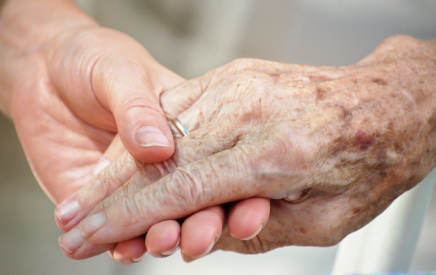

Here’s my latest column at McKnight’s Long-Term Care News:
I have great respect for those who attend to the often complicated physical needs of our long-term care residents, but if your facility doesn’t have a solid social service department, it isn’t as good as it could be. Yes, the medical care is vital, but the social service department addresses many of the issues essential to resident satisfaction.
Market researcher Margaret A. Wylde, PhD, notes that the three most important elements of satisfaction with a long-term care community are the friendliness of staff, the degree to which residents feel the community is their home, and the opportunity they have to stay connected with the rest of the world.
In her 2010 McKnight’s Online Expo talk, she stated that it’s very satisfied residents who refer others to their communities.
Consider the multitude of tasks the average social worker performs:
· Helps the resident settle into the facility
· Handles roommates conflicts
· Facilitates room changes
· Assists with the purchase of new clothing
· Locates or arranges for reimbursement of lost clothing
· Facilitates the signing of financial forms
· Explains and establishes advance directives

Posted by Dr. El - December 13, 2012 - Business Strategies, Engaging with families, Long-Term Living Magazine, Tips for gifts, visits

 Here’s my latest article on Long-Term Living magazine online:
Here’s my latest article on Long-Term Living magazine online:
The holiday season is a time when family members are more likely than usual to visit their loved ones in long-term care facilities. Out-of-town relatives may be making their annual visit, or grandchildren off from school might be stopping by to see Grandma or Grandpa. Now’s your chance to roll out the red carpet and show families what nursing homes are really about—caring treatment of their loved ones, an engaged staff that considers family members part of the team and good customer service. Where to start taking advantage of this opportunity to shine? At the front desk…
1. Encourage staff to provide an extra-warm holiday welcome.
LTC staff members are used to the hustle, buzzers, equipment and jargon of facility life, but the environment can be jarring to occasional visitors. Counteract their expectations of a sterile setting by offering a cheerful hello from a holiday-themed lobby, providing directions to their loved ones that show personal knowledge of the resident (“Your aunt is probably at lunch on the first floor right now so you might want to check there before you go to her room.”) and suggesting guests have a look at the visitor’s information provided by the facility. This material can be displayed as informally as a stack of newsletters on the counter, or with the fanfare of a labeled magazine rack filled with the elements outlined below and complete with resident greeter.
2. Reach out to family members through the facility newsletter.
Have relatives sign up to receive the missive so they can be informed of events and happenings all year round—and create a facility newsletter if you haven’t already done so. It’s easy and inexpensive to offer an electronic version, so now is the time to capture those email addresses and save on printing and mailing costs. Deliver helpful information and news consistent with the mission of your facility at a realistic frequency that can be maintained by your staff. It’s much better to offer a quarterly or semi-annual publication that can be delivered regularly than to commit to a monthly contact and not be able to follow through.
3. Offer tips for families to make the most of their visits.
For more, visit LTL magazine online:
Posted by Dr. El - July 5, 2012 - Business Strategies, Common Nursing Home Problems and How Psychologists Can Solve Them, Communication, Customer service, Engaging with families
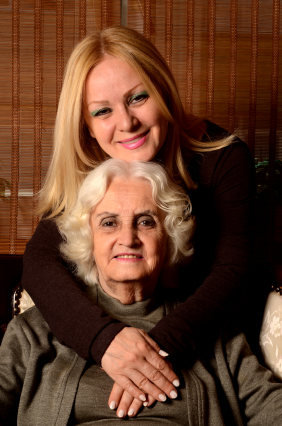
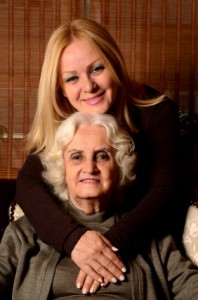
Here’s my latest article in Long-Term Living magazine online:
Family members: 5 ways to turn fault finders into fans
For most families, entry into a nursing home is like being teleported onto a strange new planet. The arrival is often swift and unanticipated, and the customs are foreign and frequently unnerving. Think back to your first days in long-term care, subtract your training, add a sick loved one and consider from that vantage point what services you can offer to improve the experience of anxious family members. Here are five ideas to get you started:
1. Provide essential information up front.
Your admissions packet probably includes the basics already, such as a copy of the residents’ rights and information on how to finance a nursing home stay and how to file a grievance. Consider going beyond the essentials to provide helpful details such as the names of the nurses, aides, doctors and social workers, and the fact that, for example, nurses wear white and aides wear blue and what the difference is in their roles in the facility. Anticipate the need for other information such as the location of the business office or how the discharge process works.
2. Offer emotional support via family meetings.
Nursing home entry is an extremely stressful event in the life of a family. Family members may consider nursing home placement to be “the beginning of the end” and be experiencing anticipatory grief as they look toward losing their loved one, even though the loss might be many years away. Most families are negotiating the added life tasks of trying to decide what’s best for Mom and perhaps selling a home or dispersing a lifetime of possessions. Family disagreements are common. Nursing homes that offer supportive and informative sessions run by the social worker or psychologist, with community referrals as needed, are more likely to be viewed with gratitude for meeting this unspoken need than to become targets of misplace anxiety and rage. Examples of meeting topics could include “understanding dementia,” “supporting your loved one during nursing home placement” and “coping with changing family dynamics.” In addition, offering information on illnesses such diabetes, provided by a knowledgeable staff member or by a local representative of an organization such as the American Diabetes Association, can improve the compliance of families with residents’ special diets and reduce conflict with staff (and residents) around this issue.
3. Support the family council.
Posted by Dr. El - November 4, 2011 - Common Nursing Home Problems and How Psychologists Can Solve Them, Communication, Engaging with families, Tips for gifts, visits

With Thanksgiving upon us in less than three weeks, it’s time for this perennial post from Dr. El at mybetternursinghome.com:

‘Twas the Week Before Christmas…
And 83-year old Albertha assured me her family was planning to take her home for the holidays.
“Have you talked to them about it? Have they called the social worker to arrange a pass, and meds, and transportation?”
“No,” she replied, “but they’re coming to get me.”
‘Twas the week after Christmas, and Albertha was glum.
“They didn’t show up. I waited all day, but they didn’t come.”
Albertha spent Christmas day watching other people go out on pass and return, and seeing families arriving with food and gifts and smiles.
Now my patients and I start discussing the holidays a few weeks in advance, addressing wishes and practicalities, phoning families if needed, and getting the social worker involved. We set up a hierarchy of plans.
Plan A: Go home for the day.
Plan B: Go out to a wheelchair accessible restaurant with family.
Plan C: Have visitors come with food and go around the corner for coffee, if possible, just to get out.
Plan D: Stay in with visitors and food.
Plan E: Talk to family members on the telephone, discussing plans for a future visit, while sitting in a room festooned with cards and holiday decorations. Attend the nursing home holiday party.
Plan F: Have a small holiday gathering in the room with nursing home friends after the facility party.
Since then, my people know what to expect from the holidays, even if the expectation is that their family might not arrive as hoped.
Posted by Dr. El - November 29, 2010 - Boomers, Business Strategies, Communication, Customer service, Engaging with families, Technology, Younger residents

Looking for a great, inexpensive way to create some good will and holiday cheer at the nursing home this year? Why not set up a call center using Skype? Residents, families, and staff members can sign up to call loved ones around the globe, conversing with them via video call.
What it would take:
- A laptop or desk-top computer set up with FREE Skype
- A semi-quiet, semi-private area for conversations
- Tech support, or volunteers who know how to use Skype (for example. high school students or tech-savvy residents)
- A pre-call information sheet for families so they can set up Skype on the computers of those they plan to call.
- A sign-up sheet to maintain order in what is likely to be a wildly popular service
Posted by Dr. El - November 16, 2010 - Communication, Engaging with families, Tips for gifts, visits

I posted this before the holidays in 2008, but it’s worth repeating:
‘Twas the week before Christmas…
And 83-year old Albertha assured me her family was planning to take her home for the holidays.
“Have you talked to them about it? Have they called the social worker to arrange a pass, and meds, and transportation?”
“No,” she replied, “but they’re coming to get me.”
‘Twas the week after Christmas, and Albertha was glum.
“They didn’t show up. I waited all day, but they didn’t come.”
Albertha spent Christmas day watching other people go out on pass and return, and seeing families arriving with food and gifts and smiles.
Now my patients and I start discussing the holidays a few weeks in advance, addressing wishes and practicalities, phoning families if needed, and getting the social worker involved. We set up a hierarchy of plans.
Plan A: Go home for the day.
Plan B: Go out to a wheelchair accessible restaurant with family.
Plan C: Have visitors come with food and go around the corner for coffee, if possible, just to get out.
Plan D: Stay in with visitors and food.
Plan E: Talk to family members on the telephone, discussing plans for a future visit, while sitting in a room festooned with cards and holiday decorations. Attend the nursing home holiday party.
Plan F: Have a small holiday gathering in the room with nursing home friends after the facility party.
Since then, my people know what to expect from the holidays, even if the expectation is that their family might not arrive as hoped.
Posted by Dr. El - June 15, 2010 - Customer service, Engaging with families, Transitions in care
Many residents have shared with me the experience of leaving their homes suddenly because of a medical emergency, only to find themselves unable to return. Now living in the nursing home, it’s difficult for them to wrap up their affairs in their former home, causing depression, anxiety, and a loss of control. In this post, guest blogger Katie Hustead of Paper Moon Moves describes how Senior Move Managers can assist residents and their families with the move to a nursing home. — Dr. El

Katie Hustead, on right
Downsizing and transitioning into a nursing home
By: Katie Hustead
Owner and Senior Move Manager, Paper Moon Moves
Their stories are unique but share a common thread:
- A woman in her eighties finds she suddenly can no longer live independently after she falls and breaks a bone; she can’t manage with an aide in her walk-up apartment.
- An elderly gentleman has been in rehab for a few weeks, planning to return home to his house in the suburbs. But his doctors advise him to enter a nursing home instead, and he agrees this is the best decision. He hasn’t even begun to think about how to pack up all his belongings.
- A woman in her early nineties comes down with pneumonia and is hospitalized. Her doctor will not release her unless she moves somewhere where she will have care around the clock, and there are no relatives to supervise home care.
Each one has thought about moving – perhaps for years – but has put it off until now. “Now” has come and they realize that the vast majority of their belongings won’t fit in their new home. They can’t imagine how to start the process of figuring out what to move and what to do with all the things that won’t come with them.
Because these stories are being played out more and more often, an industry has evolved to provide the solution. Members of the National Association of Senior Move Managers – a countrywide organization with more than 500 members – fill in when there are no adult children or friends available to help with the stressful process of disbanding a home and moving a senior.
Most senior move managers start with a floor plan of the new residence or room. They work with the senior to decide which of their things can fit comfortably and they help decide what to do with the remaining possessions – selling, donating, recycling or shipping to the senior’s family and friends.
When a senior can’t be physically present to coordinate their own move, a senior move manager can find creative ways of helping them maintain control over the process. In some cases a senior will entrust the senior move manager to work in their home without them. In other situations, a senior will prefer to have a neighbor or relative supervise the senior move manager. All senior move managers are insured and bonded.
In either scenario, the senior move manager involves the senior as much as possible – keeping them updated on progress and helping them make decisions. For most of us, the best part of a job is making the seniors’ new home as comfortable and warm as the home they left. It can be as simple as hanging a favorite family photo or painting on the wall across from the seniors’ new bed so it is the first thing they see in the morning. And the reason we all love what we do is that when we walk out the door, the senior is comfortable and relaxed, surrounded by his or her favorite things.
Paper Moon Moves, a member of the National Association of Senior Move Managers, is a senior move management company serving seniors in the New York City area. To find a senior move manager in your location, go to www.nasmm.org.
Posted by Dr. El - May 24, 2010 - Business Strategies, Communication, Customer service, Engaging with families, Technology

For families with hectic schedules, trying to attend Care Plan Meetings, which occur during daytime work hours, can be a major challenge. Of course they don’t want to miss the opportunity to meet with the whole treatment team to provide and gather information, and to advocate for their loved one. On the other hand, taking time from work and other obligations may prevent even the most dedicated family member from being able to show up for this very important meeting. Using the free Skype or another video call option would allow family members to be present from almost anywhere — even halfway across the world.
For nursing homes, offering families the option to Skype into Care Plan Meetings shows their understanding of the challenges faced by family members and their dedication to customer service. It highlights their commitment to providing the best possible care for the residents, which includes facilitating the ability of families to be part of the treatment team. And did I mention it’s free?









 Here’s my latest article on Long-Term Living magazine online:
Here’s my latest article on Long-Term Living magazine online:





